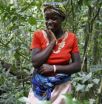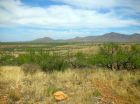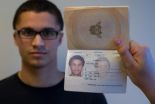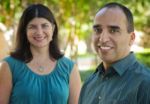(Press-News.org) Hugely popular non-steroidal anti-inflammation drugs like aspirin, naproxen (marketed as Aleve) and ibuprofen (Advil, Motrin) all work by inhibiting or killing an enzyme called cyclooxygenase – a key catalyst in production of hormone-like lipid compounds called prostaglandins that are linked to a variety of ailments, from headaches and arthritis to menstrual cramps and wound sepsis.
In a new paper, published this week in the online early edition of PNAS, researchers at the University of California, San Diego School of Medicine conclude that aspirin has a second effect: Not only does it kill cyclooxygenase, thus preventing production of the prostaglandins that cause inflammation and pain, it also prompts the enzyme to generate another compound that hastens the end of inflammation, returning the affected cells to homeostatic health.
"Aspirin causes the cyclooxygenase to make a small amount of a related product called 15-HETE," said senior author Edward A. Dennis, PhD, Distinguished Professor of Pharmacology, Chemistry and Biochemistry. "During infection and inflammation, the 15-HETE can be converted by a second enzyme into lipoxin, which is known to help reverse inflammation and cause its resolution – a good thing."
Specifically, Dennis and colleagues looked at the function of a type of white blood cells called macrophages, a major player in the body's immune response to injury and infection. They found that macrophages contain the biochemical tools to not just initiate inflammation, a natural part of the immune response, but also to promote recovery from inflammation by releasing 15-HETE and converting it into lipoxin as the inflammation progresses.
Dennis said the findings may open new possibilities for anti-inflammatory therapies by developing new drugs based on analogues of lipoxin and other related molecules that promote resolution of inflammation. "If we can find ways to promote more resolution of inflammation, we can promote health," he said.
INFORMATION:
Co-authors include Paul C. Norris, David Gosselin, Donna Reichart and Christopher K. Glass, all at UC San Diego.
Funding support for this research came, in part, from the National Institutes of Health (grants U54 GM069338 and T32 GM007752)
Aspirin, take 2
White blood cell research shows how causing and conquering inflammation are inextricably linked
2014-08-18
ELSE PRESS RELEASES FROM THIS DATE:
Pygmy phenotype developed many times, adaptive to rainforest
2014-08-18
The small body size associated with the pygmy phenotype is probably a selective adaptation for rainforest hunter-gatherers, according to an international team of researchers, but all African pygmy phenotypes do not have the same genetic underpinning, suggesting a more recent adaptation than previously thought.
"I'm interested in how rainforest hunter-gatherers have adapted to their very challenging environments," said George H. Perry, assistant professor of anthropology and biology, Penn State. "Tropical rainforests are difficult for humans to live in. It is extremely ...
Bionic liquids from lignin
2014-08-18
While the powerful solvents known as ionic liquids show great promise for liberating fermentable sugars from lignocellulose and improving the economics of advanced biofuels, an even more promising candidate is on the horizon – bionic liquids.
Researchers at the U.S. Department of Energy's Joint BioEnergy Institute (JBEI) have developed "bionic liquids" from lignin and hemicellulose, two by-products of biofuel production from biorefineries. JBEI is a multi-institutional partnership led by Lawrence Berkeley National Laboratory (Berkeley Lab) that was established by the ...
Proteins critical to wound healing identified
2014-08-18
Mice missing two important proteins of the vascular system develop normally and appear healthy in adulthood, as long as they don't become injured. If they do, their wounds don't heal properly, a new study shows.
The research, at Washington University School of Medicine in St. Louis, may have implications for treating diseases involving abnormal blood vessel growth, such as the impaired wound healing often seen in diabetes and the loss of vision caused by macular degeneration.
The study appears Aug. 18 in the Proceedings of the National Academy of Sciences (PNAS) online ...
Climate change will threaten fish by drying out Southwest US streams, study predicts
2014-08-18
COLUMBUS, Ohio – Fish species native to a major Arizona watershed may lose access to important segments of their habitat by 2050 as surface water flow is reduced by the effects of climate warming, new research suggests.
Most of these fish species, found in the Verde River Basin, are already threatened or endangered. Their survival relies on easy access to various resources throughout the river and its tributary streams. The species include the speckled dace (Rhinichthys osculus), roundtail chub (Gila robusta) and Sonora sucker (Catostomus insignis).
A key component ...
Trees and shrubs invading critical grasslands, diminish cattle production
2014-08-18
TEMPE, Ariz. – Half of the Earth's land mass is made up of rangelands, which include grasslands and savannas, yet they are being transformed at an alarming rate. Woody plants, such as trees and shrubs, are moving in and taking over, leading to a loss of critical habitat and causing a drastic change in the ability of ecosystems to produce food — specifically meat.
Researchers with Arizona State University's School of Life Sciences led an investigation that quantified this loss in both the United States and Argentina. The study's results are published in today's online ...
Researchers obtain key insights into how the internal body clock is tuned
2014-08-18
DALLAS – August 18, 2014 – Researchers at UT Southwestern Medical Center have found a new way that internal body clocks are regulated by a type of molecule known as long non-coding RNA.
The internal body clocks, called circadian clocks, regulate the daily "rhythms" of many bodily functions, from waking and sleeping to body temperature and hunger. They are largely "tuned" to a 24-hour cycle that is influenced by external cues such as light and temperature.
"Although we know that long non-coding RNAs are abundant in many organisms, what they do in the body, and how they ...
UM research improves temperature modeling across mountainous landscapes
2014-08-18
MISSOULA – New research by University of Montana doctoral student Jared Oyler provides improved computer models for estimating temperature across mountainous landscapes.
The work was published Aug. 12 in the International Journal of Climatology in an article titled "Creating a topoclimatic daily air temperature dataset for the conterminous United States using homogenized station data and remotely sensed land skin temperature."
Collaborating with UM faculty co-authors Ashley Ballantyne, Kelsey Jencso, Michael Sweet and Steve Running, Oyler provided a new climate dataset ...
Passport study reveals vulnerability in photo-ID security checks
2014-08-18
Security systems based on photo identification could be significantly improved by selecting staff who have an aptitude for this very difficult visual task, a study of Australian passport officers suggests.
Previous research has shown that people find it challenging to match unfamiliar faces.
"Despite this, photo-ID is still widely used in security settings. Whenever we cross a border, apply for a passport or access secure premises, our appearance is checked against a photograph," says UNSW psychologist Dr David White.
To find out whether people who regularly carry out ...
New study reveals vulnerability in photo-ID security checks
2014-08-18
Passport issuing officers are no better at identifying if someone is holding a fake passport photo than the average person, new research has revealed.
A pioneering study of Australian passport office staff by a team of psychologists from Aberdeen, York and Sydney, revealed a 15% error rate in matching the person to the passport photo they were displaying.
In real life this degree of inaccuracy would correspond to the admittance of several thousand travellers bearing fake passports.
The findings are published today (Monday August 18) in the journal PLOS ONE.
They ...
Older coral species more hardy, UT Arlington biologists say
2014-08-18
New research indicates older species of coral have more of what it takes to survive a warming and increasingly polluted climate, according to biologists from the University of Texas at Arlington and the University of Puerto Rico – Mayagüez.
The researchers examined 140 samples of 14 species of Caribbean corals for a study published by the open-access journal PLOS ONE on Aug. 18.
Jorge H. Pinzón C., a postdoctoral researcher in the UT Arlington Department of Biology, is lead author on the study. Co-authors are Laura Mydlarz, UT Arlington associate professor of biology, ...
LAST 30 PRESS RELEASES:
Scalable and healable gradient textiles for multi‑scenario radiative cooling via bicomponent blow spinning
Research shows informed traders never let a good climate crisis go to waste
Intelligent XGBoost framework enhances asphalt pavement skid resistance assessment
Dual-function biomaterials for postoperative osteosarcoma: Tumor suppression and bone regeneration
New framework reveals where transport emissions concentrate in Singapore
NTP-enhanced lattice oxygen activation in Ce-Co catalysts for low-temperature soot combustion
Synergistic interface engineering in Cu-Zn-Ce catalysts for efficient CO2 hydrogenation to methanol
COVID-19 leaves a lasting mark on the human brain
Scientists use ultrasound to soften and treat cancer tumors without damaging healthy tissue
Community swimming program for Black youth boosts skills, sense of belonging, study finds
Specific depressive symptoms in midlife linked to increased dementia risk
An ‘illuminating’ design sheds light on cholesterol
Who is more likely to get long COVID?
Study showcases resilience and rapid growth of “living rocks”
Naval Research Lab diver earns Office of Naval Research 2025 Sailor of the Year
New Mayo-led study establishes practical definition for rapidly progressive dementia
Fossil fuel industry’s “climate false solutions” reinforce its power and aggravate environmental injustice
Researchers reveal bias in a widely used measure of algorithm performance
Alcohol causes cancer. A study from IOCB Prague confirms damage to DNA and shows how cells defend against it
Hidden viruses in wastewater treatment may shape public health risks, study finds
Unlock the power of nature: how biomass can transform climate mitigation
Biochar reshapes hidden soil microbes that capture carbon dioxide in farmland
Reducing saturated fat intake shows mortality benefit, but only in high-risk individuals
Manta rays create mobile ecosystems, study finds
Study: Mixed results in using lipoic acid to treat progressive multiple sclerosis
Norbert Holtkamp appointed director of Fermi National Accelerator Laboratory
New agentic AI platform accelerates advanced optics design
Biologists discover neurons use physical signals — not electricity — to stabilize communication
Researchers discover that a hormone can access the brain by hitchhiking
University of Oklahoma researcher awarded funding to pursue AI-powered material design
[Press-News.org] Aspirin, take 2White blood cell research shows how causing and conquering inflammation are inextricably linked








